What is the first thing that comes to your mind when you look at a dog?
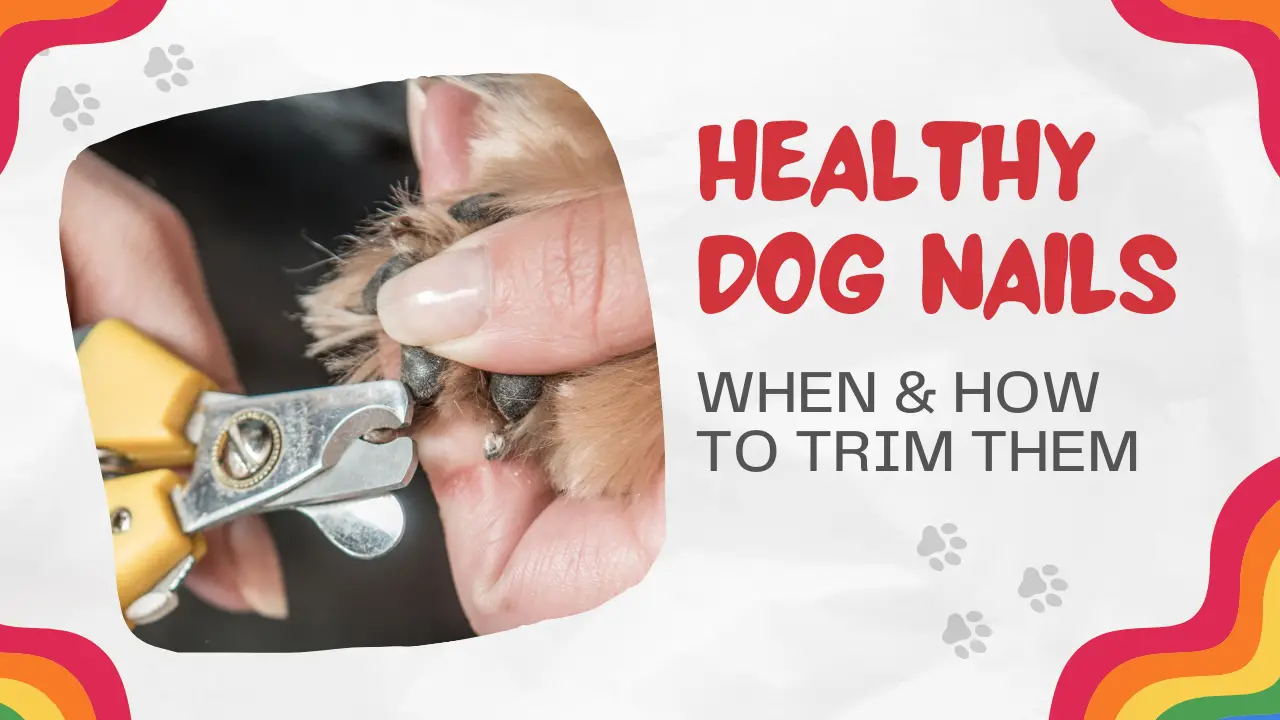
Is it their breed, their coat, teeth, or unique personality?
Whatever it is, we bet it isn’t their nails.

Read our Smart Poodles - Smart Tricks eBook for only $2.99
Dive into a treasure trove of engaging tricks and tips designed specifically for your poodle!
Yes, that’s right, nails! It sounds such a random topic, but there’s a lot of sense behind it. You should pay attention to your dog’s nails or other dogs you see.
They’re pretty remarkable.
What Will You Learn? 👇
What’s so special about dog nails?
To illustrate to you just how vital a dog’s nails are, we need to look at the anatomy first. Every nail of a dog should be thick, and each nail usually consists of a keratin layer on the outer part.
The reason for this thick coating is that it helps protect any external objects or surfaces from penetrating the nail and getting inside.
On the inside of the nail, the structures are soft and smooth. Deep inside their nails are lots of blood cells within the quick. They supply the cells with oxygen and glucose. There are also nerves here, which is why cutting the claw too short would cause pain.
This inside part is often referred to as the quick as it finishes just before keratin coating, making the rest of a dog’s nail seem hollow.
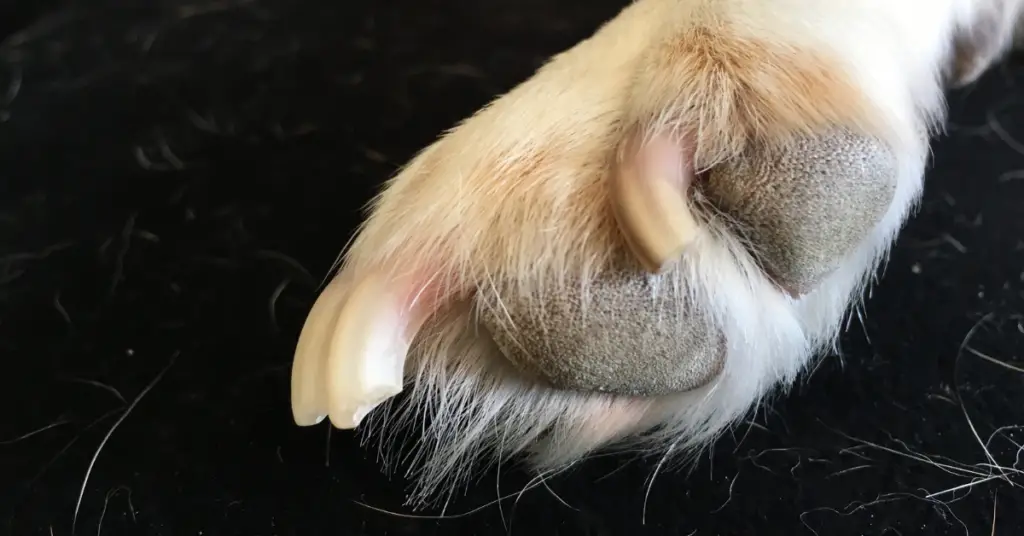
If you have a dog and their shell (pink outer layer) has been broken, its cells will divide and activate to cause a new nail to grow. You may be wondering if it’s painful for a dog when they hurt their nail; it is, as their nail is attached to the toe bone.
Dog nail colors
If you’ve not thought about a dog’s nails before, you probably didn’t realize that they come in a range of different colors.
Unlike us humans, dogs are unique. The color of their nail can depend entirely on the color of its hair and skin surrounding it. Sometimes dogs nails can be a single color or even consist of multiple colors on one nail.
Dogs usually, when born, have white nails, and as they get older, their nails start to turn black. Color changes in some dogs because their pigment darkens with age. This is a natural process. Sometimes you might also see that a dog’s nail is pink, and that’s a sign that the quick is clear and the nail is healthy.
Do note, though; you should always pay careful consideration to the color of your dog’s nails. Some colors have not been mentioned above, which can be a cause for concern.
Red dog nails
If you see a dog’s nail go red, it is most likely a cause for concern.
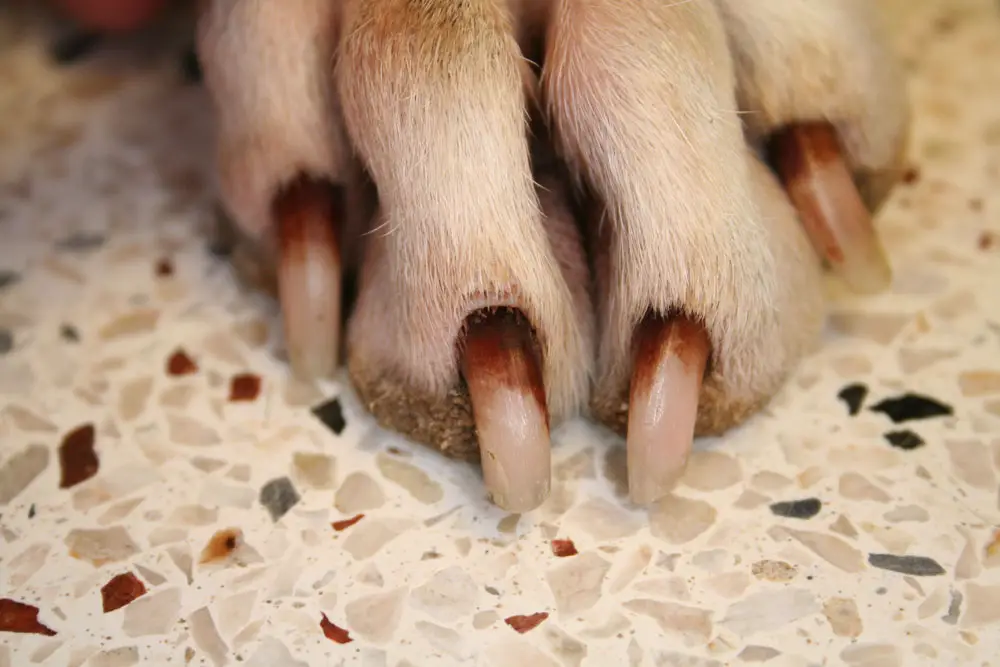
The most common reason a dog’s nail turns red is that it could be prone to a fungal infection, and it could be a high chance of it being a yeast infection. Fungal infections are possible though not common. This red color, like is seen in the photo, would be due to oxidation. This is when the dog licks a lot and the saliva stains the claw and fur. For most, this will be due to underlying allergies, which cause itchiness. Do note; there are other factors why your dog’s nail can become red such as allergies and age.
Be cautious of your dog if it has red nails; if you see your dog licking its nail or chewing on it, they likely have a fungal infection . The best way to rule this out is by taking your dog to a vet, so they can review the nail color and prescribe a specific treatment if required.
Brown dog nails
Dogs can be prone to developing many allergies and, depending on the reaction, could trigger their nails to discolor to brown. One of the most common reasons for this is also a fungal infection.
The reason for it discoloring brown is often the nail, and the quick is full of dried blood from the infection. Similarly, the nail tends to grow longer than usual in this scenario. Again, if you notice this and it looks different from normal, seek out a veterinarian’s help.
Black dog nails
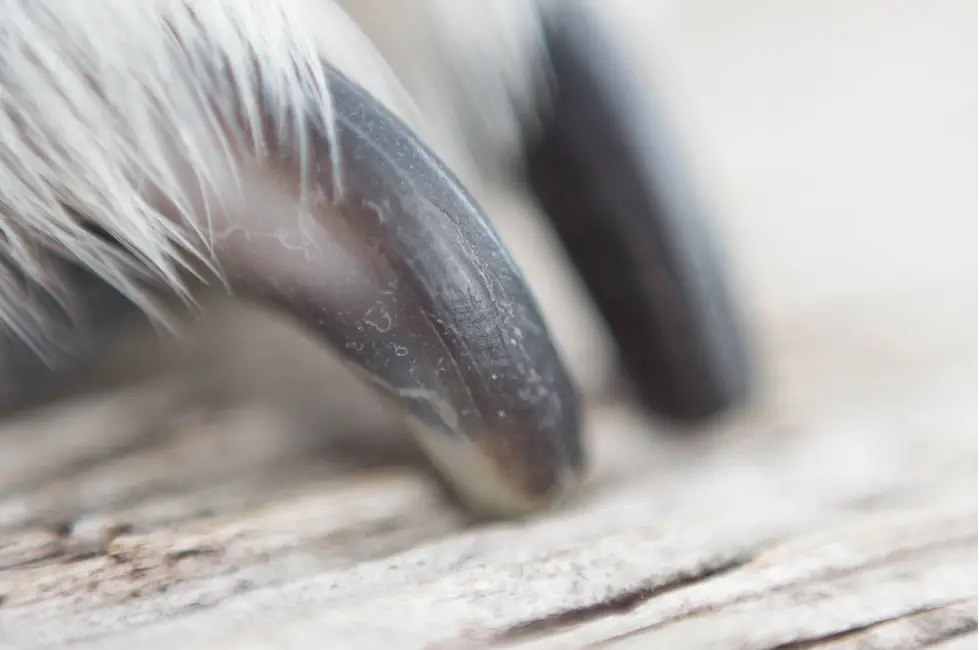
When it comes to dogs getting older, black nails are perfectly normal as it’s a sign of them growing old. While pigment can darken with age, this usually happens before a dog is one. It does not happen to all dogs. However, there are some instances when they can turn this color also. One of which is when their claws become infected and the infection travels down to the nail, causing them to go black. If a nail bed infection were present, there would be obvious signs e.g. red and swollen skin, ooze and pain.
Usually, topical or oral antibiotics are used to rectify this. If you feel your dog’s nail is going black before it gets older, then seek out medical advice.
Signs dogs nails are too long
Have you ever played with a dog before and felt a scratch on your arm? If so, it’s usually because they have long nails that need to be cut.
Most of the time, a dog’s nails will naturally get shorter if they play and go for regular walks. Their nails tend to grind alongside the ground and wear away. However, some breeds are less active than others, and dogs that are elderly do not have the chance of hard surfaces wearing them down.
Dew (thumb) claws do not grind down on pavement, so need more regular trimming than other claws.
Because of this, their nails might need to be trimmed. One good indicator of this is when you hear your dog walking on a hard surface like pavement, you will hear it clicking against the surface.
Another sign is their foot position may look abnormal, and this is because the long nail makes their leg look unusual. As a result, it can also cause a lot more pressure on the nail when exercising, causing significant discomfort. A common sign of this is that your dog might limp and show difficulty walking.
If your dog’s nail is overgrown, the nail itself may curl over the paw.
Similarly, if your dog’s nail is too long, it may be at risk of splintering or splitting. If this happens, it’s excruciating and requires immediate attention. Because of this, the vet will probably bandage it up and maybe remove it.
What is the typical length a dog nail should be?
For your dog to have a healthy nail and not be at risk of hurting itself, it should not grow past its paw length. It would be best to look at the nail quickly as a guideline for your dog’s length.
Can a dog’s nail be removed?
If your dog has an infection or dead nail in the worst-case scenario, you can take it to the vet for removal. This is usually an expensive treatment, that involves anesthetic and, on average, can cost around $250-$400.
How to cut dogs nails
To practice good hygiene and health for your canine companion, you should trim its nails regularly. Do note; this is not always a pleasant experience for dogs. Therefore you should start while your dog is young to ensure it gets used to it from an early age.
Likewise, you want to do it gently and make it a calming experience for your dog. To help you, here is a step-by-step technique.
- Get your dog’s paw and put it gently in your hand. Then get your thumb and attach it to the toe pad and place your forefinger above the nail. Remove your dog’s hair.
- Then get the pad and slowly push your thumb back. At the same time, move your forefinger forward to extend your dogs nail.
- Next, clip just the tip of your dog’s nail across at the top. Repeat this with other parts of the nail and your dog’s claws.
- When you’re clipping your dog’s nails, be extremely careful clipping further than the curve. Otherwise, you could put yourself in danger of injuring the quick where its blood vessels are. If you do that, most likely, your dog’s nails will bleed.
In the rare instance that you cut the quick, don’t worry; just get a tissue and hold the nail tightly. After some time, the bleeding should stop after 5 minutes.
Vet tip: Put the claw in an egg cup of cornflour if it’s bleeding. This helps stem bleeding quicker.
If the dog is licking at it, use a buster collar until they stop.
Types of trimmers
You can use the method mentioned above to trim your dog’s nails using a variety of trimmers. However, one of the most useful is a type of clippers called guillotine and are effective for the toy poodle or small dog breeds. If you have a larger dog breed, you may want to use plier clippers to cut through thick nails.
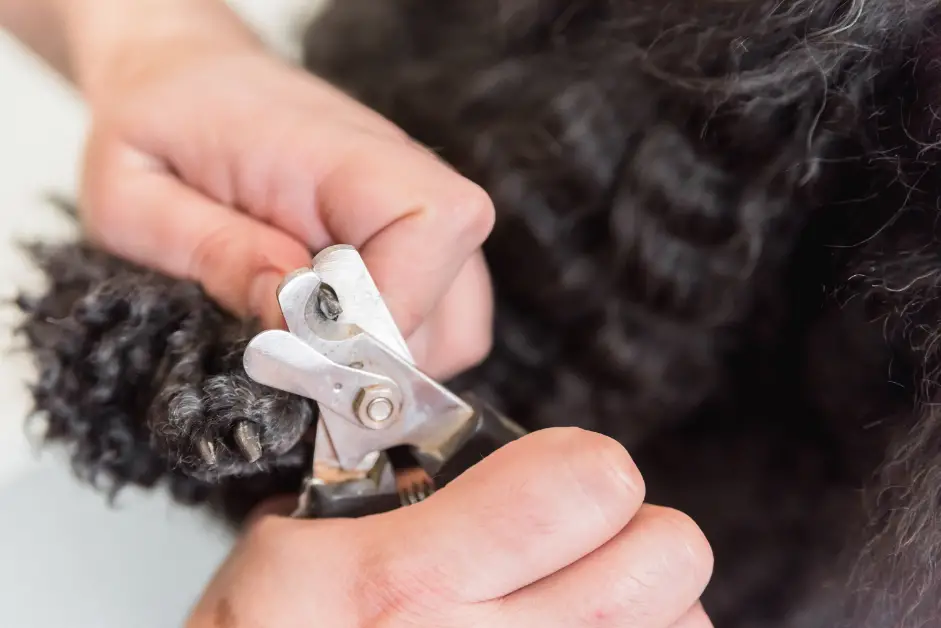
Final Thoughts
Overall, make sure you trim your dog’s nails regularly to prevent any problems. A great way of doing this is by maintaining a schedule and also inspecting them regularly. Similarly, the nails on their back legs require less trimming than the front, so don’t trim them regularly.
If you’re not confident trimming your dog’s nails, there is always the option to taking them to get done professionally. Depending on where you’re located and the type of groomers, it costs on average $9 for trimming. However, other factors can influence this, like the number of nails and whether it’s a pre-booked appointment or not.
Finally, do observe your dog’s nails regularly. As they get older, their nails tend to grow thicker and do not wear away as easily, and some causes for concern are red and brown nails. Therefore look out for your dog licking or chewing it; if there’s anything abnormal, take it to a vet.
Marko is the founder and author at PoodleHQ, where he blends profound expertise with formal training in Animal Behavior and Canine Genetics. With multiple generations of poodles under his care, he’s a breed connoisseur, honored with the Canine Care Excellence Award and lauded by the International Pet Enthusiasts Association.

